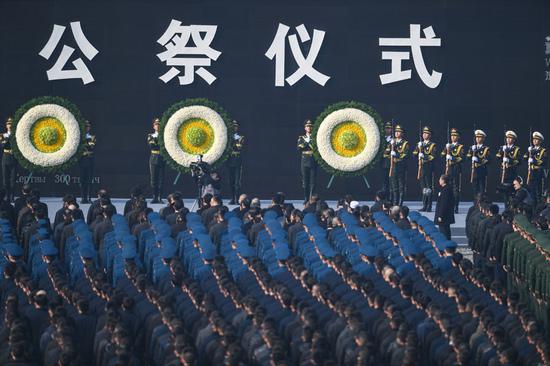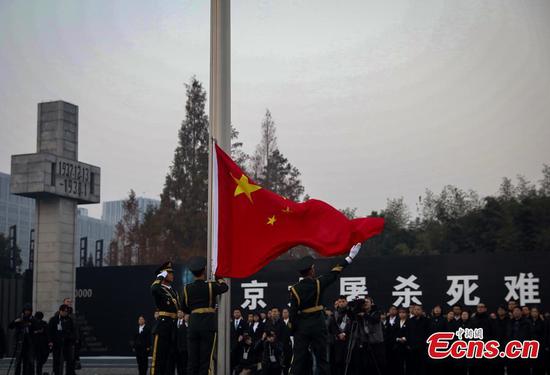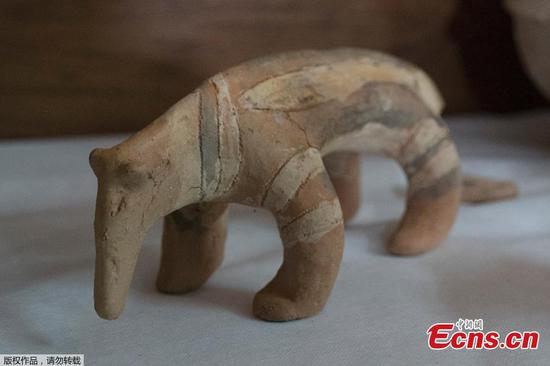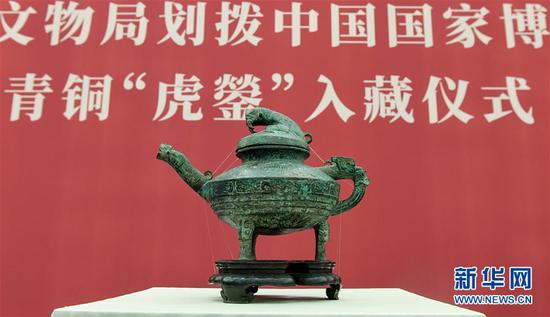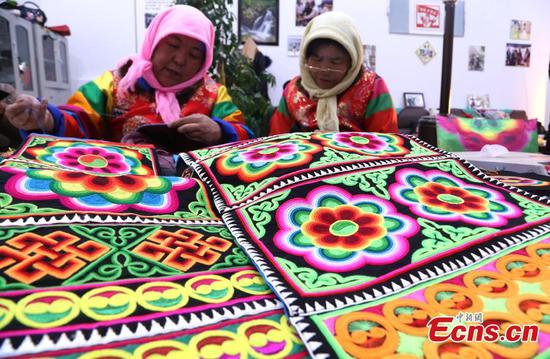
Customers take a selfie with Samsung Electronics Co's new Galaxy Note 9 smartphone during its rollout in Shanghai on Aug 15, 2018. (Photo provided to China Daily)
South Korean technology giant Samsung Electronics Co Ltd says it has "come back to the battlefield", and will take on China's rising brands with a new youth-oriented strategy, as it seeks to reclaim lost sales in the world's largest smartphone market.
Despite being the world's biggest smartphone maker, Samsung sales are close to negligible in China. According to Strategy Analytics, in the second quarter, Samsung sales made up less than 1 percent of the Chinese market.
The falls have forced Samsung to scale back its production in China. It is reportedly closing its factory in Tianjin after it ended production in Shenzhen, Guangdong province in April.
Now the firm says it is hitting back with new strategies, especially aimed at China's young consumers.
Innovative and cutting-edge technologies will go to Samsung's mid-range smartphones first, said Kwon Gye-hyun, president of Samsung Electronics China operations, at the launch ceremony of the mid-range Galaxy A8s.
The phone, which is designed for Chinese consumers, is the first to have Samsung's Infinity-O display, which sports a true bezel-less screen, and a small hole in the display to house the selfie camera. The design - dubbed by some as a 'punch hole' - aims to be less intrusive than the recent trend of having a notched screen.
In addition, the company will continue its strategy of celebrity endorsement, such as when popular actors Zhu Yawen and Jing Boran appeared at the launch ceremony of its Galaxy S9 and S9 in March in Guangzhou.
In October, Samsung unveiled two new Galaxy A series phones, the Galaxy A6s and Galaxy A9s, looking to appeal to the twin passions of young Chinese: photography and social media.
The firm will also soon launch customized products for female consumers, helping with selfie and facial beautification.
Samsung is fully prepared and fearless to face any challenges in the world's most competitive market, and smartphones that prove themselves in China will be rolled out globally, Kwon said.
In an earlier interview, he said the company will ramp up its efforts in sports marketing and localization in China. It will also carry out in-depth cooperation with Chinese commercial giant Suning Holdings Group in both its online and offline retail channels.
Samsung has a long way to go if it is to reclaim its spot as China's best-selling smartphone brand, a title it last held in 2013.
"Samsung still lags behind its local competitors such as Huawei, Vivo, Oppo and Xiaomi in terms of shipments and market share; it should make more efforts in strengthening brand building, and expanding offline and online retail channels," said Jia Mo, a research analyst with technology consultancy Canalys.
Jia noted the competition in China's smartphone market is fierce, as Samsung's archrivals have also stepped up their technology.
Honor, one of the twin signature smartphone brands owned by Huawei Technologies Co Ltd, unveiled on Monday its Honor V20 model, which also features an all-screen display and a small punch-hole camera.
In January, Vivo Communication Technology Co Ltd released its X20 Plus UD, the world's first smartphone to ship with an in-screen fingerprint reader.
Huawei's own P20 Pro has picked up numerous international awards for its triple camera setup.
Samsung once again remained the global leader in the smartphone market, shipping 72.2 million units in the third quarter of the year, despite a 13.4 percent decline in shipments from last year. Meanwhile, Huawei has leapfrogged Apple Inc into second place.
According to IDC, Samsung is losing most ground on mid-range and cheaper smartphones.

















